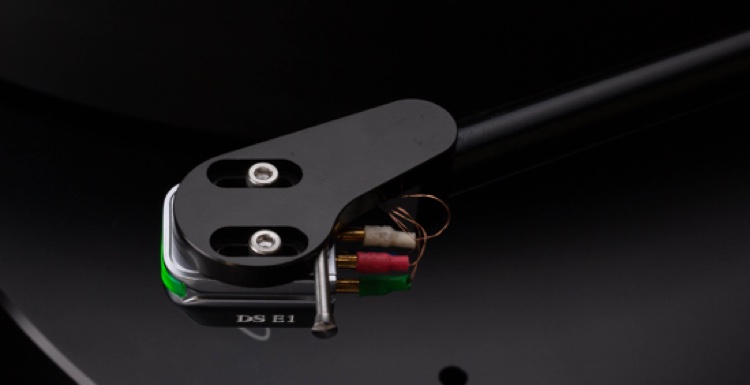
In Part 1 of this review, I spent a good bit of time telling you about the technology behind the DS Audio E1 optical cartridge system. It is very different from other cartridges I’ve used in the past. Here in Part 2, I am primarily going to address the sound.
There are a couple of housekeeping things, however, that I want to mention before we get to that. First of all, you cannot adjust the sound of this cartridge. As I mentioned in Part 1, the DS E1 is a cartridge system. It consists of the cartridge, and, as DS Audio calls it, a phono stage/equalizer.
Perhaps this could be a bit misleading to a few of you since it is not an equalizer in the traditional sense of that word. Think of it as a dedicated phono stage. You plug the cables from your turntable into it, and it has a set of outputs that go to your line stage. The DS E1 Equalizer is single-ended only and takes the place of your phono stage.
The unit does have a switch for you to pick one of two settings. These settings relate to a filter that is applied to the bass response of the cartridge. One setting is the DS Audio standard (6dB roll-off below 30Hz) and one is the RIAA setting (6dB cutoff below 50Hz and another 6dB cutoff below 30 Hz ) Suffice it to say that I always prefer the RIAA, but you can try both and use the one that sounds the best to you. There is no right or wrong setting on this switch but do turn the EQ off before you change the switch setting.
Now, Let’s Talk About Sound
I suspect if you read Part 1 of this review, you know that I am quite enamored with this cartridge system. The way it presents sound is very involving and very different from what I have experienced before from a cartridge. I can hear clarity in the music that wasn’t there previously, but there is no evidence that this clarity is being generated by a mechanical device. It is akin to the clarity you would notice if someone removed a film from a window you look through every day and previously thought was quite clear.
The overriding impression I get from this cartridge is that all of the sound is cut from the same cloth. The relationship between the instruments makes sense to your mind. You don’t have to work your brain to paste together a bunch of pieces of an audio puzzle. Complex musical passages are unraveled and presented as a complete picture with ease that sounds effortless.
When listening to an album, it always sounds like you are hearing a recording that was made at the same time and in the same place versus one that was pasted together over months and the musicians were all recorded in different spaces. Jack referred to this in his earlier reviews as temporal correctness, and I have to agree.
Other Elements of Sound
There are other elements of sound that audiophiles look for in judging the quality of a cartridge or a recording. One of these is the ability to disassociate album noise from the music. The DS Audio E1 does this better than any cartridge I have previously heard. With it, I seemed to be able to more easily ignore any surface noise on the albums such as a pop or tick. It does not reduce the noise but it seems to render it in a different plane than the music.
The other thing that stands out to me is that with this cartridge there was a correct integration and definition of the bass line in so many of the albums I listened to. With many other cartridges, the bass line sounds as if it was inserted after the fact and is somewhat disassociated from the music. This cartridge places the bass line firmly “in” the music, and it becomes what is driving the music. The bass is nicely resolved even as the music gets complex.
Soundstage
As for the soundstage, I experienced very nice width and height but I found the depth to be a bit shallower than I am used to. It is as if the cartridge has taken the rear stage and pushed it forward a bit. The overall presentation makes you sit up and take notice of the music, and I actually liked this lot.
I didn’t mind trading off a bit of depth to be able to enjoy the supporting artist(s) more. It reminded me of what I hear at a live performance. Recreating the soundstage is not my number one priority when I’m listening. TONE and being able to appreciate what the individual artist brings to the instrument and music are foremost for me.
Spinning Some Tunes
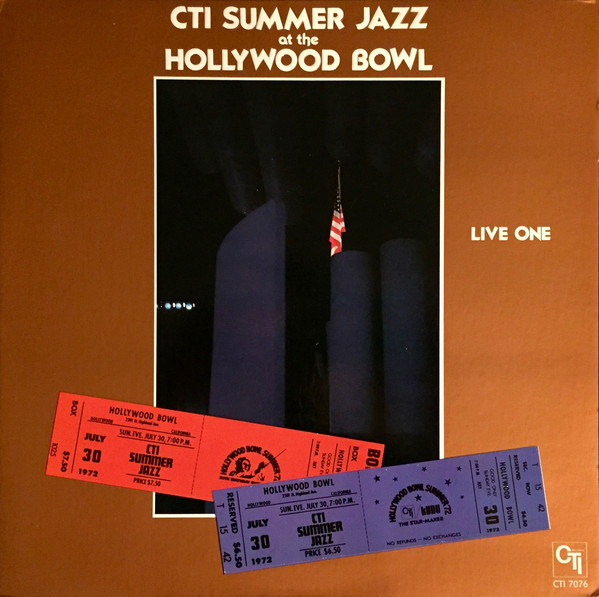
The CTI Summer Jazz at the Hollywood Bowl album recorded live in 1972 is a great example of tone. George Benson plays “California Dreamin’” and the DS E1 captures every nuance of the tone of his guitar.
Benson kills it on this cut, and if your idea of George Benson comes from the Breezin’ album, then take a listen to this cut and understand what this artist is capable of and the variety of tones he gets from his guitar. It is a masterclass of guitar work.
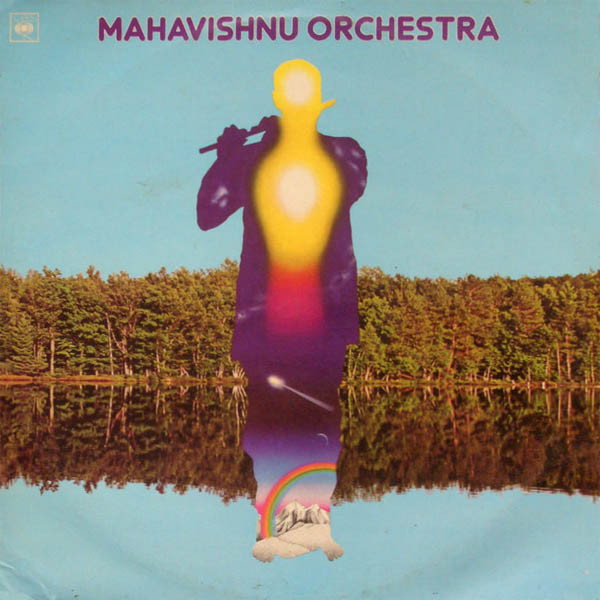
There is a cut on the Mahavishnu Orchestra Apocalypse album that I like to throw at cartridges as an audio torture test. You might have guessed this from the album cover, but “this ain’t your momma’s audiophile album.”
That being said, there is a LOT going on with this album if you aren’t familiar with it. It features the London Symphony Orchestra with Michael Tilson Thomas along with John McLaughlin’s Mahavishnu Orchestra. I once saw an interview where Sir George Martin, the noted producer of Beatles albums, said this was his favorite of all of the albums he has ever worked on.
The cut, “Hymn to Him,” creates an experience that I would imagine is like riding on a Japanese bullet train. Put your seat belt on to listen to this one. The combination of the London Symphony Orchestra mixed between Jon-Luc Ponty’s electric violin, McLaughlin’s electric guitar, the bass line, and the incessant drumming, demands a lot of a cartridge to track and decipher it in such a way that you can understand and enjoy this cut.
Depending on the cartridge’s ability to separate the instruments, it is either going to be a very interesting piece of music and a fun ride or it is going to be a “train wreck” (pun intended). The DS E1 nails it better than I have heard before.
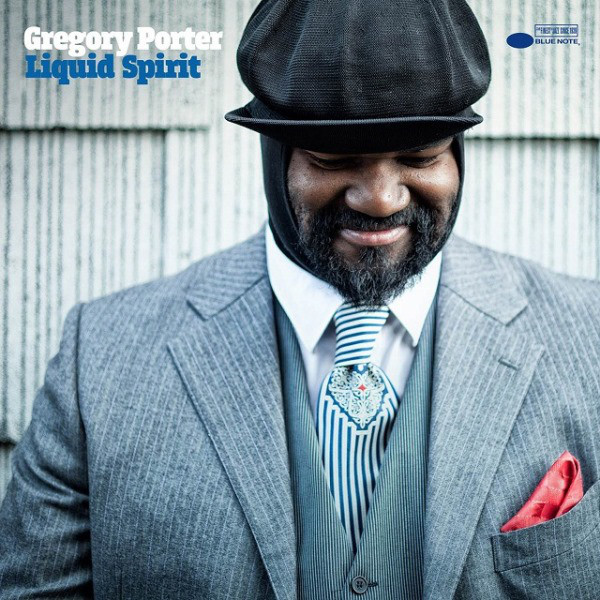
Next up was Gregory Porter’s Liquid Spirit album on Blue Note. The title cut, “Liquid Spirit,” gets me up and moving, and I find myself clapping to the music. The DS E1 presented it better than I have ever heard it before. The hand-clapping on the recording was spot on, and Porter’s voice is captivating. The amazing bass line is quick, tight and clean as are the horns. The music just flows.
I simply shook my head when the song ended. I was emotionally exhausted. Wow!
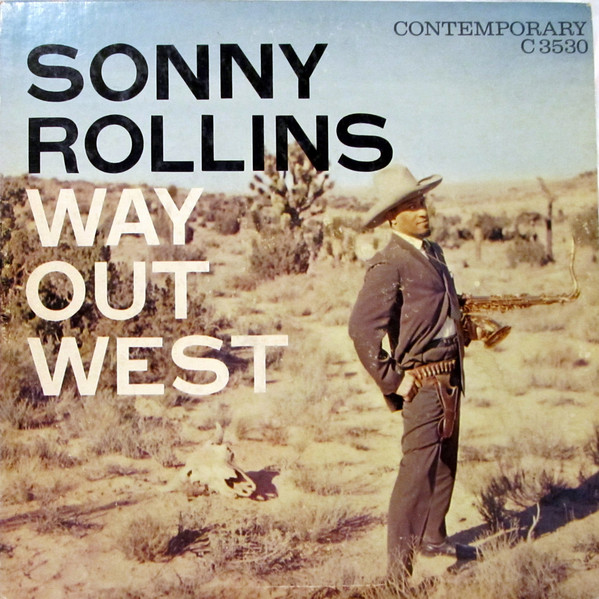
For my last selection, I chose “I’m an Old Cowhand” from Sonny Rollins’ Way Out West album. I have the Doug Sax mastered Analogue Productions Super Vinyl Limited edition of this disk, but like all four of the albums mentioned in this review, it is also available from Discogs.
I have gone to the Louisiana State University School of Music’s concert venue countless times to listen to jazz trios, and I have to say that this album presented the music as if I were sitting there in Row G. The amazing clarity of Rollins’ sax has just the right amount of “bite” and tone. Manne’s drums are lifelike, and Ray Brown’s bass is tuneful and defined. I ended up listening to both sides of this album, and I have never heard it sound any better. I also have not heard a better recording of a saxaphone.
Album after album, I sat paying full attention to what I was hearing. With this cartridge, I enjoyed the artistry of the musicians and their interactions with one another. I also found myself “understanding” the music better than ever before.
About Audiophile Albums
You will notice in my reviews, I will use regular music for most examples. That doesn’t mean that I won’t throw in an occasional audiophile nugget. The reason I do this is twofold. First, I want to expose you to some albums you may not know about or have forgotten about. Second, I want to know how the component I am reviewing works with music that I listen to every day.
My reason for having a high-end audio system is not to listen to audiophile recordings. This goes back to my selling days in the ’70s and ’80s when I got totally burnt out on Amanda McBroom and Dave Grusin’s Sheffield albums. Yep, even back then we had our version of Diana Krall.
Summarizing
Now, this is the tricky part of any review where I try to summarize my conclusions on this cartridge system. Does this cartridge system do everything better than other cartridges I have heard? Of course, it doesn’t, but remember, this is DS Audio’s entry-level system.
I have heard cartridges with more depth as I mentioned earlier. I have heard cartridges with a bit more open and extended/airy top end. I have heard cartridges with a bit less congestion/compression in the upper mids when things get complex. However, as you ascend the DS Audio line some of the above-mentioned comments drop off of the list. This cartridge’s minor issues are subtractive in nature, and they are only noticeable in comparison to some very high-priced competition.
Beating the Competition
But, here’s where this cartridge system beats the competition I’ve heard:
- None of the competition has that “open reel” quality of sound
- None have a dead quiet background
- None have the absence of haze you have grown accustomed to
- None disassociate surface noise from the music better
I have not had a better listening experience with any other cartridge. It does everything you need a cartridge to do to get you closer to the music. When the “film” you have been listening through for all of these years is removed, you get the closest thing I have heard to an open reel.
At $2,750.00 for the cartridge AND the DS Audio Phono Stage/Equalizer, I simply cannot think of anything that is close. It is my new Audio Waypoint and a game-changer for me personally.
I would wager that DS Audio is taking a haircut on the margin on this system in order to get the price point in an area where more audio enthusiasts can purchase it. In many ways, I really feel like this is a gift to the Audio community.


Any idea what their rebuild policy/pricing is?
I have been spinning LPs for 40 years and never broke a stylus until I had the DS-W2 and then it was 3 in one year. DS Audio wanted $3,000 to rebuild.
I asked the importer, and rebuild price for the E1 is $1,000.